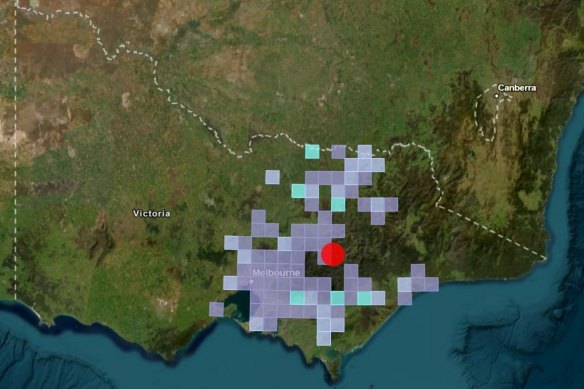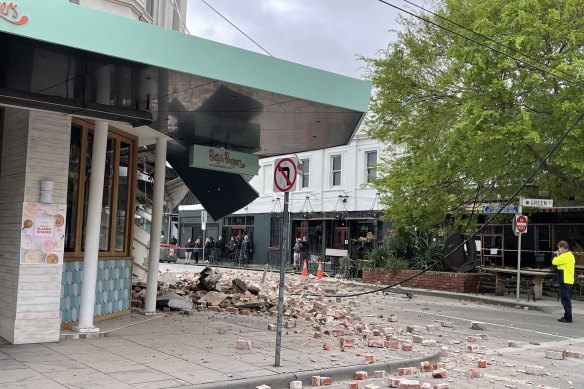- Analysis
- National
- Victoria
- Earthquakes
This was published 3 months ago
How a big quake in Victoria in 2021 caused Wednesday’s aftershock
By Liam Mannix, Lachlan Abbott and Hannah Kennelly
The earthquake felt across Victoria in the early hours of Wednesday is probably yet another aftershock from the big 2021 quake – and the Earth remains unsettled.
Wednesday’s earthquake struck Woods Point, a tiny town in the state’s High Country, at 3.48am. Seismologists put the magnitude, a measure of an earthquake’s intensity, at between 3.9 and 4.2.

The earthquake struck in Victoria’s High Country early on Wednesday morning.Credit: GeoScience Australia
That’s big enough to feel. More than 2100 reports from people shaken awake by the tremors were recorded by Geoscience Australia, from Albury to Geelong.
Wednesday’s quake may be a hint at a bigger story playing out beneath Earth’s crust.
The 5.3 magnitude quake from 2021, which hit North Rawson, near Woods Point, ruptured a large section of rock about 10 kilometres below the surface. Since 2021, enormous pressures on the crust have been trying to force those two sides of the fault back into alignment.
Wednesday morning’s quake struck at almost an identical spot and depth, according to Geoscience Australia’s data.
“Those two faces of the fault are trying to lock in again because of stress. They do it, they lock together again, and then they go ‘yeah, nah’ and slip,” says Adam Pascale, chief scientist at Melbourne’s Seismology Research Centre. “Each slip is an earthquake.”
Since 2021, his team has tracked about 1500 earthquakes in the region as the Earth tries to settle in a new alignment.
Due to their low magnitude we haven’t felt them; quakes below magnitude 3 generally cannot be felt by humans. But every so often, we get a big slip.
These aftershocks have been slowly diminishing in strength since 2021. “At the rate they are diminishing, it looks like it might go on for another few years before it settles down to what it was like before that first earthquake,” Pascale says.
Grandfather quake
The 5.9 magnitude quake that struck in 2021 was the largest ever recorded in Victoria.
Its epicentre was Rawson, a small town about 160 kilometres east of Melbourne sitting high in the Great Dividing Range, an area of significant seismic activity.
“All those mountains there have been formed by earthquakes over millions of years,” Pascale says.
The “blind fault” that cracked under the strain is invisible from the surface, and scientists are still trying to understand it. “It’s fascinating. The fault was not in the direction we were expecting, nor the type we expected. There are some questions yet to be answered,” says Gary Gibson, a seismologist and researcher at the University of Melbourne.

Betty’s Burgers in Chapel Street, Prahran, partly collapsed after an earthquake in Melbourne on September 22, 2021.Credit: Eddie Jim
To imagine the quake, your mind’s eye needs to travel 10 kilometres below the crust, where there are thick, strong layers of rock.
This rock is under tremendous pressure due to the slow shifting of the Earth’s tectonic plates (Australia sits on the middle of a plate, but pressure still builds up within the plate itself).
Now picture an area of fractured, jagged rock, jammed together by those extraordinary pressures. The rock will hold together for a while — tens of thousands of years, potentially — until the stress gets too much. Then you get a jump below the surface, and we feel a quake above it.
“It’s a seismically active region, central Victoria, in the Alps. So on a regular basis we need to expect these earthquakes to happen – every year or couple of years,” says Professor Patrice Ray, a tectonicist at the University of Sydney.
The Morning Edition newsletter is our guide to the day’s most important and interesting stories, analysis and insights. Sign up here.